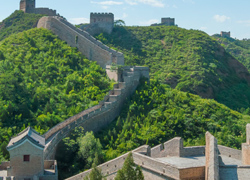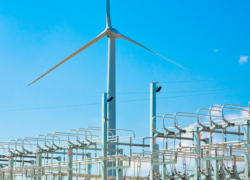Congressional Testimony: China’s Advance in LAC
 US House of Representatives
US House of Representatives
Congressional testimony as submitted for record and delivered before a Joint Subcommittee Hearing of the US House of Representatives Committee on Foreign Affairs. Video recording (below) begins at 30:00.
I would like to thank the Committee and Subcommittee Chairmen and Ranking Members and the other esteemed committee members for the opportunity to be here today.
Let me begin by saying that this hearing is very appropriately titled. China’s presence in Latin America and the Caribbean (LAC) – and other regions of the world, for that matter – has grown at a remarkable rate in just over a decade. Latin American and Caribbean exports have increased 23 percent per year on average since 2000. And Chinese banks have provided approximately $119 billion in finance to the region since 2005. An increasingly wide variety of investors – e.g., private Chinese companies, large and small, state-owned enterprises, Chinese policy and commercial banks, and China’s sovereign wealth fund – are evident in the region.
China’s growing presence in LAC is also apparent in the cultural, educational, military, and political spheres. Technical and military cooperation and ministerial dialogue are features of the relationship in many countries. In the academic realm, China is actively cooperating with Asian studies centers in Latin American universities and by financing Confucius Institutes across the region.
A Rapidly Evolving Relationship
As the China-Latin America relationship grows, it is also evolving. China’s approach to LAC has changed in the past few years – the result of numerous factors, including changing economic conditions in both China and Latin America, shifting patterns of consumption in China, the internationalization and professionalization of Chinese firms, and China’s evolving strategic considerations.
The following are three examples of recent shifts in Chinese engagement with LAC:
1. Chinese companies are exploring new approaches to investment in LAC and other regions
For almost two decades, China has pursued fairly static “going-out” objectives in LAC. These include securing access to raw materials, establishing new markets for Chinese exports, promoting Chinese brands, and internationalizing Chinese firms.
For almost two decades, China has pursued fairly static “going-out” objectives in LAC.
Much, though not all, of what China is doing in LAC today still supports Beijing’s “going-out” goals. Chinese trade with and foreign direct investment in the region are still overwhelmingly focused on the acquisition of raw materials and agricultural goods. Chinese companies also continue to seek new markets for increasingly high-tech exports. And Chinese brands, such as Lifa, Lenovo, Huawei, and Haier, are increasingly popular among the region’s consumers.
But China’s approach to achieving these objectives has changed over time. This is especially evident in terms of investment.
Having learned from the 2007-8 global food crisis, for example, China’s agricultural giants have adopted new overseas investment strategies. No longer content to rely solely on international traders for agricultural supply from Latin America, COFCO, China’s top grains trader, is planning to invest across the agricultural supply chain (in production, processing, logistics, and marketing) to better control food supply and pricing.
Mergers and acquisitions (M&A) are also becoming increasingly prevalent as China seeks access to key markets/resources and “know-how” from local firms and multinationals with years of experience in the region. Chinese oil company, Sinopec, acquired a 30 percent stake in Galp Energia Brazil in 2011. And Brazilian oil firm, Petrobras, sold its Peruvian subsidiary to China National Petroleum Company (CNPC) for $2.6 billion in 2013. Backed by US$10 billion from China Development Bank and Agricultural Bank of China, COFCO has recently begun acquiring firms (e.g., Nidera and Noble Group) with assets across the region.
Chinese companies are also increasingly partnering with foreign firms in overseas deals. Mexican and Chinese firms jointly bid on a high-speed passenger rail project in Mexico, for example, although that deal eventually collapsed. In the region’s mining and energy sectors, Chinese companies are increasingly taking stakes in consortia instead of seeking 100 percent control over an asset. Chinese oil companies, CNPC and China National Offshore Oil Corporation, each have a 10 percent stake in Brazil’s offshore Libra oil field. Chinese companies are also working with local legal and marketing firms in an effort to navigate host-country regulations and markets.
Also apparent is growing interest in the development of cross-regional transportation infrastructure, such as the proposed Brazil-Peru railway and a bi-oceanic Chilean tunnel. These projects support multiple objectives, but are largely intended to facilitate the transport of raw materials to ports, especially along the Pacific Coast. The China-backed renovation of Argentina’s Belgrano-Cargas railway could promote transport of Argentine soy to the Chilean border and then to port, for example.
In addition to supporting resource acquisition, infrastructure proposals and new Latin America-focused investment policies also support elements of China’s economic reform agenda. Large overseas rail projects are thought to address overcapacity in China’s steel industry. China’s newly-announced “1+3+6” and “3x3” frameworks for cooperation with Latin America promote economic upgrading by encouraging greater involvement of China’s private and public companies in high-tech and manufacturing sectors in Latin America, such as telecommunications, logistics, rail, and shipbuilding.
2. China is growing its diplomatic presence in LAC
If it ever was, China is no longer tip-toeing around the U.S. when engaging LAC. As in Africa and Asia, China has made major diplo-economic strides in the region in past two years alone.
China engages not only left-leaning, centrally-run governments, but nearly every country in Latin America and the Caribbean, including the market-oriented Pacific Alliance nations. Li Keqiang discussed infrastructure investment in Colombia and Peru and planned a currency swap with Chile during his May 2015 trip to the region.
China engages not only left-leaning, centrally-run governments, but nearly every country in Latin America and the Caribbean
In addition to maintaining an active presence in several regional organizations (e.g., the Organization of American States and the Inter-American Development Bank), China and the Community of Latin American and Caribbean States (CELAC, which excludes the U.S. and Canada) established a new forum in 2014, during President Xi Jinping’s visit to Fortaleza, Brazil. The China-CELAC Forum’s five-year cooperation plan includes proposals for technical cooperation and financing.
When considered alongside other China’s regional organizations, Chinese Academy of Social Sciences scholar, Xue Li, views the newly-established China-CELAC Forum as indicative of China’s “diplomatic transformation,” or the development of an increasingly prominent diplomatic presence in various regions of the world.
China also recently announced several new Latin America-focused credit lines and investment funds. In addition to the credit lines associated with the China-CELAC Forum, China's central bank announced this month that it will establish a $10 billion fund for investment in Latin American manufacturing. An additional $10 billion is being funneled to the BRICS-led New Development Bank.
3. Many Chinese firms have improved their operations in Latin America, but Chinese economic engagement might still be affecting regional standards
Recent case study analysis suggests that Chinese companies have made considerable advances in community relations and adherence to local environmental and labor standards. They are, in certain cases, operating on par with or even better than other foreign firms in Latin America. Complaints about Chinese companies continue to surface, however. And the environmental standards of China’s top lenders to Latin America – China Development Bank and China Export-Import Bank – are still weaker than those of other international financial institutions.
There are also indications that some Latin American governments have intentionally weakened investment and other standards or disregarded existing regulations in order to attract Chinese and other investment, or to facilitate cross-Pacific trade. This is especially the case in sectors – e.g., mining, oil & natural gas, and agriculture – in which Chinese firms are quite active. Examples include recent changes to Peru’s mining sector regulations and Ecuador’s removal of local partner stipulations in exchange for dam financing.
China’s ongoing and extensive financial support for certain governments in Latin America, such as Nicolás Maduro’s in Venezuela, is thought to enable continued economic mismanagement and to facilitate corruption and standards erosion.
In addition, China’s ongoing and extensive financial support for certain governments in the region, such as Nicolás Maduro’s in Venezuela, is thought to enable continued economic mismanagement and to facilitate corruption and standards erosion. China is committed to establishing a long-term presence in Venezuela, which has the largest proven oil reserves in the world. By our calculations, the country has received approximately US $50 billion in loans from Chinese banks since 2005. Many of these loans are repaid in oil.
Looking Ahead
China is and will continue to be an important economic partner for many countries in the region, even as economic growth slows on both sides of the Pacific. Latin America is a key destination as Beijing seeks to ensure domestic food and energy security. And LAC’s commodities exporters largely depend on Chinese demand.
China is and will continue to be an important economic partner for many countries in the region, even as economic growth slows on both sides of the Pacific.
Latin America will also remain a critical market for an increasingly wide variety of Chinese goods, from cell phones and fabrics to high speed trains and electricity transmission infrastructure.
Whether China-Latin America relations are in fact “win-win” and “mutually beneficial,” as China indicates, is debatable. Chinese trade is thought to have contributed considerably to regional economic growth in recent years. But Chinese economic engagement benefits some countries far more than others. Mexico, for example, has a considerable trade deficit with China. China’s focus on Latin America’s commodities has also resulted in export “primarization,” or growing shares of primary commodities in certain countries’ export baskets. As global commodities prices fall, South American nations in particular are feeling the effects of excessive dependence on the export of commodities.
Chinese investment could be helpful, even transformative, for some LAC industries and sectors, but “mutual benefit” will require LAC governments to negotiate effectively and maintain necessary environmental, labor, and other standards.
Chinese investment could be helpful, even transformative, for some LAC industries and sectors (e.g., renewable energy or electricity transmission in Brazil), but “mutual benefit” will require LAC governments to negotiate effectively and maintain necessary environmental, labor, and other standards. Broader efforts to diversify China’s economic engagement and to improve regional competitiveness would also promote a longer-term “win” for Latin America.



















